Audi A1 VS Nissan Interstar – Specs, Efficiency & Price Comparison
Which model is the better choice – the Audi A1 or the Nissan Interstar? We compare performance (207 HP vs 180 HP), boot capacity (335 L vs ), efficiency (5.30 L vs 7.40 L), and of course, the price (19500 £ vs 33300 £).
Find out now which car fits your needs better!
The Audi A1 (Hatchback) is powered by a Petrol engine and comes with a Manuel or Automatic transmission. In comparison, the Nissan Interstar (Cargo Van) features a Diesel or Electric engine and a Manuel or Automatic gearbox.
When it comes to boot capacity, the Audi A1 offers 335 L, while the Nissan Interstar provides – depending on what matters most to you. If you’re looking for more power, you’ll need to decide whether the 207 HP of the Audi A1 or the 180 HP of the Nissan Interstar suits your needs better.
There are also differences in efficiency: 5.30 L vs 7.40 L. In terms of price, the Audi A1 starts at 19500 £, while the Nissan Interstar is available from 33300 £.
Compare all the key specs now and find out which model fits your lifestyle best!
Audi A1
The Audi A1 captivates with its sleek design and compact dimensions, making it an ideal choice for urban driving. Inside, it boasts a premium interior that reflects Audi's commitment to quality and attention to detail. With a spirited performance and advanced technology, the A1 delivers an engaging driving experience that appeals to both young and discerning drivers alike.
details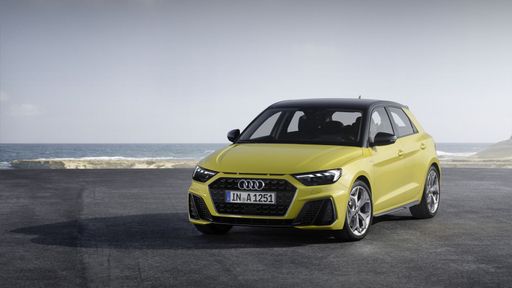 @ audi-mediacenter.com
@ audi-mediacenter.com
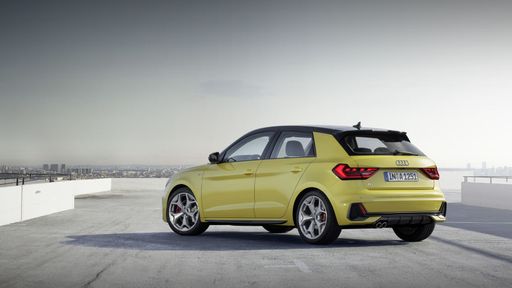 @ audi-mediacenter.com
@ audi-mediacenter.com
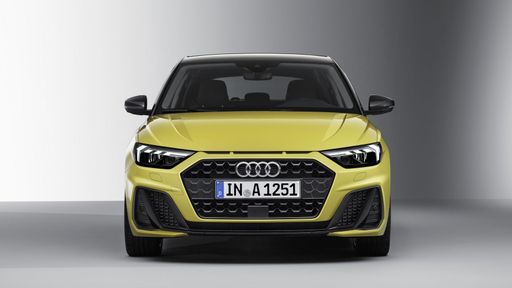 @ audi-mediacenter.com
@ audi-mediacenter.com
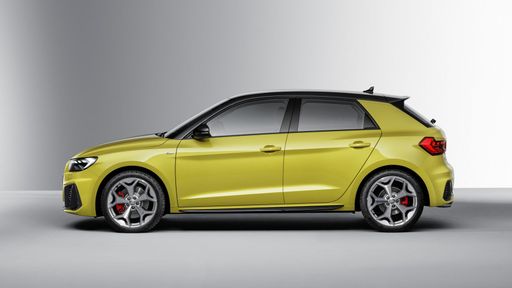 @ audi-mediacenter.com
@ audi-mediacenter.com
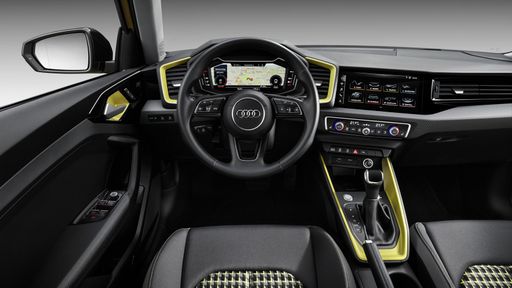 @ audi-mediacenter.com
@ audi-mediacenter.com
 @ audi-mediacenter.com
@ audi-mediacenter.com
Nissan Interstar
The Nissan Interstar is a versatile van that expertly combines practicality with modern design. It offers a spacious interior that caters to both cargo and passenger needs, making it ideal for businesses and families alike. With its robust performance and efficient fuel consumption, the Interstar stands out as a reliable choice in the commercial vehicle market.
details

|
|
|
|
|
Costs and Consumption |
|
|---|---|
|
Price
19500 - 28100 £
|
Price
33300 - 54400 £
|
|
Consumption L/100km
5.3 - 6.5 L
|
Consumption L/100km
7.4 - 7.5 L
|
|
Consumption kWh/100km
-
|
Consumption kWh/100km
-
|
|
Electric Range
-
|
Electric Range
400 km
|
|
Battery Capacity
-
|
Battery Capacity
-
|
|
co2
120 - 147 g/km
|
co2
0 - 195 g/km
|
|
Fuel tank capacity
40 L
|
Fuel tank capacity
80 - 105 L
|
Dimensions and Body |
|
|---|---|
|
Body Type
Hatchback
|
Body Type
Cargo Van
|
|
Seats
5
|
Seats
3 - 7
|
|
Doors
5
|
Doors
4
|
|
Curb weight
1175 - 1365 kg
|
Curb weight
1927 - 2538 kg
|
|
Trunk capacity
335 L
|
Trunk capacity
-
|
|
Length
4029 - 4046 mm
|
Length
5048 - 6848 mm
|
|
Width
1740 - 1756 mm
|
Width
2070 - 2222 mm
|
|
Height
1409 - 1459 mm
|
Height
2307 - 2808 mm
|
|
Payload
410 - 475 kg
|
Payload
845 - 1451 kg
|
Engine and Performance |
|
|---|---|
|
Engine Type
Petrol
|
Engine Type
Diesel, Electric
|
|
Transmission
Manuel, Automatic
|
Transmission
Manuel, Automatic
|
|
Transmission Detail
Manual Gearbox, Dual-Clutch Automatic
|
Transmission Detail
Manual Gearbox, Automatic Gearbox, Automated Manual, Reduction Gearbox
|
|
Drive Type
Front-Wheel Drive
|
Drive Type
Front-Wheel Drive, Rear-Wheel Drive
|
|
Power HP
95 - 207 HP
|
Power HP
105 - 180 HP
|
|
Acceleration 0-100km/h
6.5 - 11.5 s
|
Acceleration 0-100km/h
-
|
|
Max Speed
182 - 245 km/h
|
Max Speed
120 - 177 km/h
|
|
Torque
175 - 320 Nm
|
Torque
300 - 400 Nm
|
|
Number of Cylinders
3 - 4
|
Number of Cylinders
4
|
|
Power kW
70 - 152 kW
|
Power kW
77 - 132 kW
|
|
Engine capacity
999 - 1984 cm3
|
Engine capacity
1997 - 2299 cm3
|
General |
|
|---|---|
|
Model Year
2024
|
Model Year
2021 - 2024
|
|
CO2 Efficiency Class
D, E
|
CO2 Efficiency Class
G, A
|
|
Brand
Audi
|
Brand
Nissan
|
Audi A1
The Audi A1: A Compact Marvel of Modern Engineering
The Audi A1 has always been a leading figure in the premium compact car segment. As we delve into the latest version, we observe a masterclass in innovation, economic performance, and state-of-the-art technology.
Efficient Performance and Advanced Engineering
The Audi A1 offers an impressive range of petrol engines, designed with efficiency and performance in mind. With power output ranging from 95 to 207 PS, delivered through either a manual or automatic transmission, this compact vehicle offers a responsive and agile driving experience, adept at city commutes or longer motorway journeys.
Fuel efficiency is equally impressive, with consumption figures ranging between 5.3 to 6.5 L/100 km. This efficiency is complemented by the low CO2 emissions, making it an environmentally friendly choice, with CO2 efficiency classes spanning from D to E.
Innovative Design and Cutting-Edge Features
The Audi A1 is not just a vehicle; it’s a statement of style and function. With its athletic lines and a choice of striking new colours, the A1 stands out on the road. The interior is meticulously designed to maximise comfort and usability, including digital displays and the latest infotainment systems that offer seamless connectivity with your devices.
The model year 2024 has brought notable improvements, such as the inclusion of the innovative S tronic dual-clutch transmission, offering smoother and faster gear changes.
A Perfect Balance of Size and Practicality
Despite its compact size, the Audi A1 does not compromise on practicality. With its five-door hatchback design, it offers easy access and a surprising amount of space. The boot provides 335 litres of luggage space, ample for everyday usage and weekend getaways.
The Audi A1 seats five comfortably, and with a variety of trim levels such as the S line and advanced S line, there's a model to fit all tastes and needs.
Safety and Technology Features
Safety remains paramount in the design of the Audi A1. It includes features such as the Audi pre sense front, lane departure warning, and standard airbags that ensure both driver and passenger confidence on every drive.
Technologically, the Audi A1 stands head and shoulders above its competitors, with optional features such as virtual cockpit displays and navigation systems, ensuring each journey is as informed and enjoyable as possible.
Conclusion: The Audi A1 – A Standout Choice
In the competitive scene of compact cars, the Audi A1 remains a standout choice, offering exceptional balance between performance, efficiency, and style. With its advanced technology and thoughtful design, it provides both a driving pleasure and peace of mind on the road.
Nissan Interstar
The Evolution of the Nissan Interstar
The Nissan Interstar has long been a staple in the commercial vehicle sector, known for its robust build and practical design. The latest iterations have further cemented its status with a range of technical enhancements and innovative features aimed at aiding businesses in achieving optimal efficiency. Whether you're navigating city streets or traversing the highways, the Interstar stands out as a reliable workhorse ready to meet various transport needs.
Power and Performance
The current range of Nissan Interstar models boasts diesel engines ranging from 105 to 180 PS, offering a commendable blend of power and fuel efficiency across the board. With a fuel consumption of between 7.4 and 7.5 litres per 100 kilometres, these vehicles are designed to minimise operational costs while maximizing performance.
All models feature four-cylinder engines, with engine displacement between 1997 and 2299 cm³, capable of producing torque figures between 330 and 400 Nm. These specifications ensure that the Interstar offers superior pulling power, which is particularly useful for transporting heavy loads across different terrains.
Transmission and Drive Options
Versatility is at the heart of the Nissan Interstar, with transmission options including both manual and automatic gearboxes. Drivers can also choose between front-wheel and rear-wheel drive configurations, allowing the vehicle to suit specific logistical requirements or personal preferences.
For those seeking simplicity and ease of use in urban environments, the Interstar with its automated gearshift provides a smooth driving experience, reducing driver fatigue and increasing focus on the road ahead.
Dimensions and Load Capacities
The Nissan Interstar is available in various lengths, from 5048 mm to an extensive 6848 mm, catering to diverse commercial needs. With widths ranging from 2070 mm to 2222 mm and heights from 2307 mm to 2808 mm, the Interstar offers multiple configurations to maximise cargo space and accommodate various loads.
With a maximum payload capacity of up to 1451 kg, businesses can rest assured that the Interstar is more than capable of delivering goods efficiently without compromising on safety or comfort.
Innovation and Technological Features
While functionality remains a priority, Nissan has not skimped on technological advancements. Among the innovations included are advanced safety features, such as anti-lock braking systems (ABS), electronic stability control (ESC), and a variety of sensors to assist with parking and reversing.
In terms of driver comfort, the brand offers multiple trim levels with exceptional interior features designed to enhance driver experience during long hauls. Options such as climate control, advanced navigation systems, and modern infotainment setups are available, ensuring that both driver and passenger remain comfortable and connected, regardless of the journey length.
Coachwork and Trim Options
The Interstar line-up provides a range of trim levels and equipment lines, from the entry-level Visia to the high-spec Tekna, catering to different market demands and individual preferences. The selection allows buyers to prioritise features that best suit their operation or driving style.
For example, the N-CONNECTA variant offers an array of added extras, enhancing both connectivity and comfort for drivers who rely on the vehicle as a mobile office.
Conclusion
The Nissan Interstar represents a harmonious blend of power, efficiency, and technological innovation in the large van segment. With its vast array of options and features, the Interstar is undeniably a top choice for businesses looking to invest in a dependable and adaptable commercial vehicle. As the line-up continues to evolve, the Interstar remains poised to meet the growing challenges and demands of the modern logistic landscape.
The prices and data displayed are estimates based on German list prices and may vary by country. This information is not legally binding.
